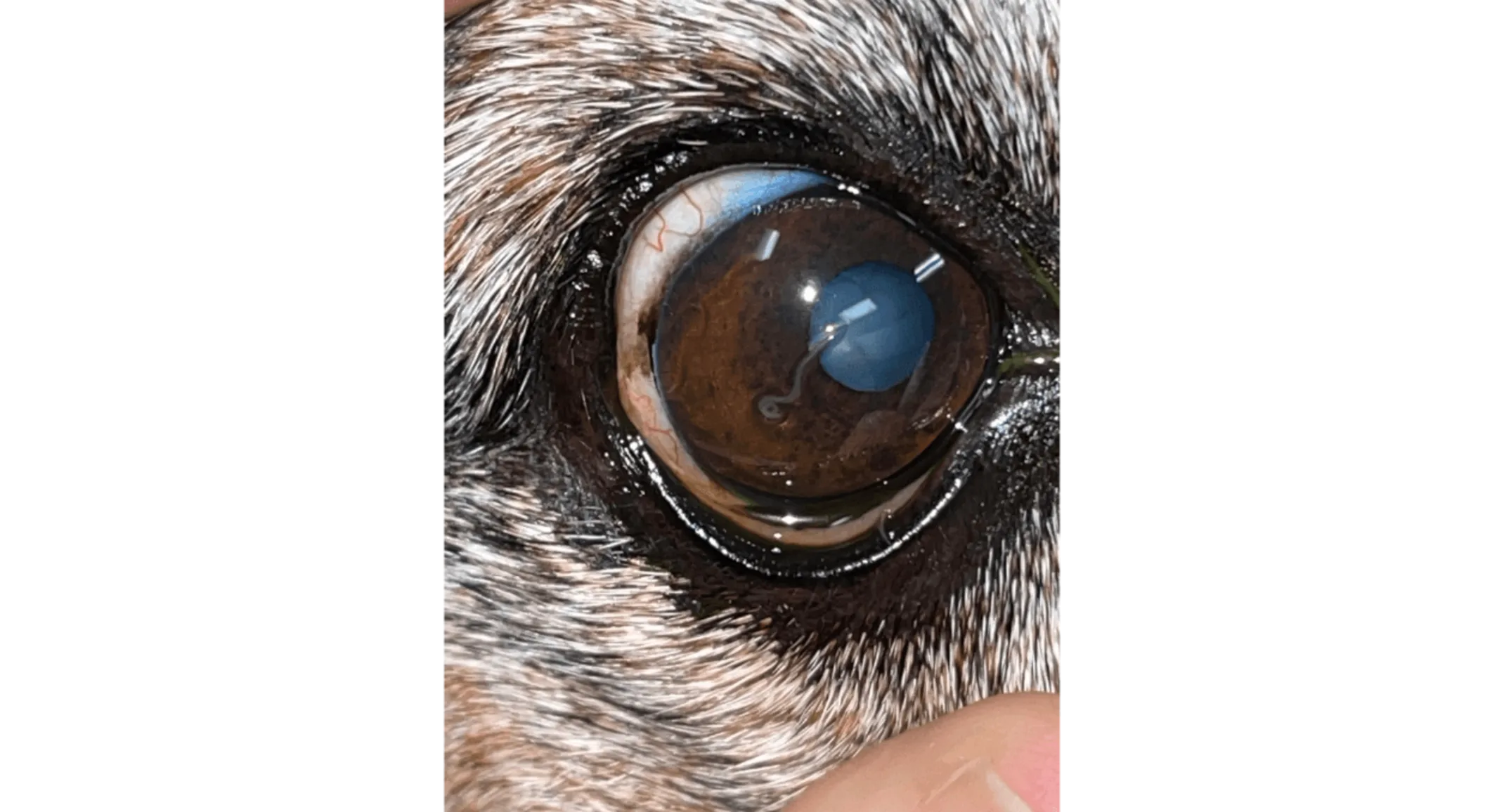How to Prevent Your Pet from Getting Eyeworms
News

As we finally head into the warmer months with spring approaching, Animal Eye Center of NJ’s ophthalmology intern, Dr. Sidney Ryan, and ophthalmologist, Dr. Brad Holmberg have some information to share about eyeworms and how you can prevent your pet from getting this type of parasite.
Eyeworms (Thelazia californiensis and Thelazia callipaeda) are parasites that can be found on the eyes of dogs, cats, and other animals, including humans. Unfortunately, these parasites are becoming more and more prevalent in the New Jersey and North Atlantic area. Infection is especially common in the warmer months of late spring and summer.
Your pet can get these worms when a fly (like a fruit fly or house fly) carrying the worm larvae lands on the eye to feed on eye secretions. During this interaction the fly can deposit worm larvae onto your pet’s eye. These larvae then developed into string-like white worms, approximately 0.5 to 0.75 inches (7 to 19 millimeters) long, which can move in snake-like motions over the eye and cause local irritation. The worms are typically found in the conjunctival sac, tear ducts, and under the third, upper, and lower eyelids along the surface of the conjunctiva. Signs your pet may have these parasites include copious amounts of ocular discharge, conjunctival redness, conjunctival swelling, squinting, itchiness, and occasionally corneal ulceration.
While, this worm is categorized as “zoonotic” (able to infect both humans and animals), direct transmission from your pet to yourself is fortunately not possible. The worm’s life-cycle is reliant on its intermediate host, the fly, for development and transmission. As such, transmission to a human is only possible through direct interaction with the fly carrier. Luckily, there are no recently reported cases of human infestation within the United States.
Once infected, treatment for your pet involves manual removal of the worms from your pet’s eye, after application of a local anesthetic. Following this, topical anti-inflammatory therapies to reduce inflammation and irritation may be used for a short period of time.
So how can you keep your pet safe and prevent them from this type of parasitic infection? Treatment with monthly preventatives that contain the active ingredient moxidectin will prevent this parasite from infecting your pet. There are many products currently available with this active ingredient including Simparica trio and Nexgard Plus. We recommend discussing preventative options with your primary veterinarian to pick the best suited product for your pet. While the worm’s prevalence may increase during the warmer months, our clinic sees cases of infection in all months of the year, as such we recommend using monthly preventatives year-round.

